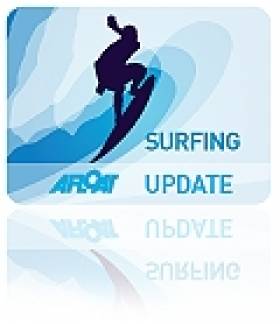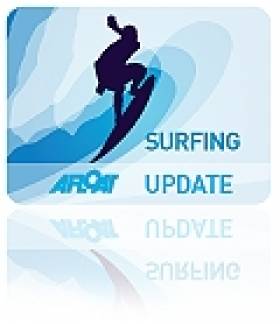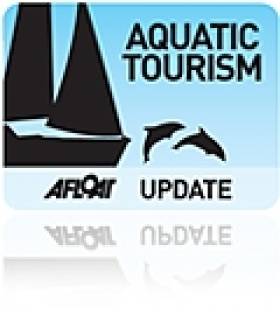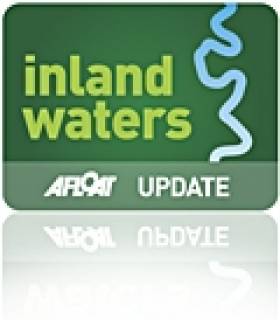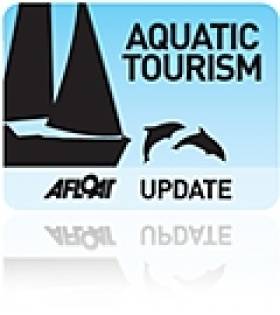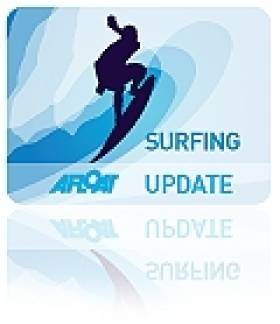Displaying items by tag: holiday
Top German Surfer Tries Ireland's Waves for Size
#SURFING - One of Germany's top surfers was in Ireland last week to sample some of Ireland's biggest waves, InsideIreland.ie reports.
Sebastian Steudtner was in Sligo to films a series of online views for Tourism Ireland in Frankfurt to pique the interest of German surfers and holidaymakers.
As well as mountain biking at Knocknarea and Union Woods, Steudtner took on the monster swells at Mullaghmore Head - made popular among the world's big wave surfers by the Tow-In Surf Session that's now in its second year.
The 'teaser' videos for a larger TV and online project will be premiered next week at the Berlin International Film Festival before hitting the web later in spring.
Kristina Gauges of Tourism Ireland said: "This is a fantastic opportunity to showcase the world-class surfing and adventure product available in this part of Ireland to a niche audience in Germany."
InsideIreland.com has more on the story HERE.
Surfing Novices Welcome in the Sunny Algarve
#SURFING - Rachel Collins writes in The Irish Times recently of her experiences learning to surf in Portugal's sunny Algarve.
"Thousands of hardy souls follow the waves around the Irish coastline," she writes, "but for rookies sacrificing themselves to the sea, the warmth of the Algarve makes it the perfect place to learn."
The "friendly, welcoming atmosphere" at Lagos, near Faro - with direct daily flights from Dublin - will surely put any surfing beginner at ease, as well as making for "a welcome break from the cold Irish winter".
And with plenty of other activities on offer, from the nightlife, shopping, fine dining and relaxing sandy beaches to kitesurfing, wakeboarding, mountain biking and rock climbing, there's something for all interests.
The Irish Times has more on the story HERE.
#MCIB - The decision to set out in poor weather, coupled with limited safety instruction, led to the tragic death of a Romanian angler on Lough Mask last summer, according to a report by the Marine Casualty Investigation Board (MCIB).
Mircea Ungur drowned after the angling boat he was in capsized in choppy waters brought on by squalling Force 8 winds on the afternoon of 8 May 2011.
Ungur had a tracheostomy tube in his throat resulting from a previous battle against throat cancer, and drowned after taking in water through this tube, the MCIB concluded. It was also found that most of his companions and the guide knew nothing about the tube.
At the time of the incident, Ungur had been on an angling holiday in Co Mayo with five colleagues accompanied by a fishing guide. On the morning of 8 May the group set out from Cappaduff in Tourmakeady on two boats, following a brief discussion about fishing and safe departure from the pier.
Winds were already reaching Force 4-6 when the group departed and sought a sheltered area of the lough to fish. After lunch winds had picked up to Force 8 and the guide signalled for a return to Tourmakeady.
At around 1.5km from the pier at Cappaduff, a wave swamped the leading boat that contained Ungur, a companion and the guide. All three on board, who were wearing buoyancy aids, went into the water.
Ungur was the first taken on board the other boat after some 10 minutes in the water. He was not moving or communicating with the others, and CPR was not administered until the boat reached the shore 20 minutes later. Ungur was pronouced dead just before 3pm.
The report concluded that the group had departed despite reservations among them about the poor weather, which had been correctly forecast that day. There was also little discussion with the anglers about their level of boating experience, the weather, or any disabilities that would affect their safety on the water.
The MCIB recommended that a full safety briefing should be given to all those hiring angling boats. It also urged the enforcement of safety regulations and certification for recreational water craft.
The full report is available to download as a PDF from the MCIB website HERE.
Cork The Place to Be For a Holiday On The Sea
#TOURISM - Winter might be upon us, but it's a great time to plan a new year holiday in Ireland on the sea, according to the UK's Daily Echo.
From night-time paddling in with renowned kayaking instructor Jim Kennedy, to snorkelling in Baltimore, relaxing in Skibbereen and and fresh seafood lunches in Kinsale, a vacation in Cork can appeal to any taste.
Whale and dolphin watching is a big draw for the region, too, as Ireland's coast – the first cetacean sanctuary in Europe - plays host to a growing variety of species.
The summer feeding grounds off the southern coast are particularly busy, and tourist boats are often treated to whales breaching the surface and surrounded by dolphins putting on a show.
The Daily Echo has more on the story HERE.
Carrickcraft Launches New Holidays on Lower Bann
Ireland's largest cruiser hire company is set to move into waterways north of the border next year.
Carrickcraft – which for 30 years has provided cruising holidays on the Shannon and the Erne - has plans to operate a small fleet of hire-boats on the Lower Bann in 2012.
The company will initially operate three Kilkenny Class cruisers (2 + 4 berth) and three Carlow Class cruisers (2 + 2 berth) from new pontoons at Coleraine Town Centre Marina.
According to Carrickcraft, a seven-day holiday on the Bann would allow travellers to see all of the river and have some extra time to discover the hinterland.
Carrickcraft MD John Morton said: “We are delighted to be able to open a fourth Irish base and to bring more tourists to the region. We are fully committed to the project and hope to increase the fleet size in the future.
"Having travelled along the Lower Bann myself, it is great to be able to open up such a wonderful waterway to a larger public.”
The first boats will arrive early in the New Year ahead of the summer season from March to October 2012.
For booking enquiries contact the sales office at 028 3834 4993. For more details visit www.cruise-ireland.com.
Making a Splash With the Family in Ireland
Watersports holidays at home make the perfect family getaway, according to The Irish Times.
The paper recently rounded up some of the best spots for making a splash with the kids – such as surfing, diving and cliff jumping in Donegal, and sailing and cruising in Kinsale - and all at prices that won't push the budget.
The Irish Times has more on the story HERE.
Surfing's for All The Family in Fuerteventura
Surfing isn't just for extremists - it can be a fun activity for the whole family, and you can even build a holiday around it!
Gary Quinn writes in The Irish Times about family surfing lessons in the Fuerteventura, where there's been an explosion in surf schools and holiday operators in recent years. As such, there's something available for all levels.
And with the Canary Islands already a popular sun-drenched holiday destination, even complete beginners won't feel they're getting in over their heads.
"Surfing is a lifestyle," writes Quinn. "The families and groups around me are absorbed by it. Their clothes, food, internal clocks. Everything swings with the tides and everyone is relaxed."
There's also a handy checklist for families to make sure everyone gets the most out of the experience.
The Irish Times has more on the story HERE.



























